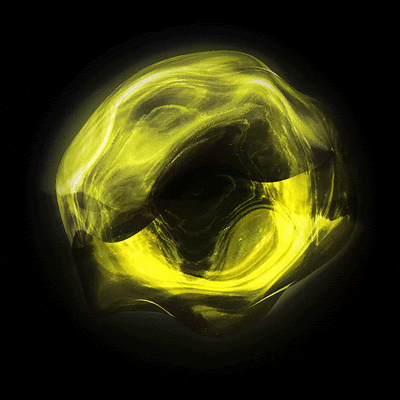
Over the last few years some exciting new theories have come out regarding effectiveness in marketing. Many relate to getting more from media investments.
AFFINITY | What Is Your Video Media Spend Really Buying? from AFFINITY on Vimeo.
A frightening statistic was released by Microsoft Canada in 2015. Published by Time, it showed that humans now have a lower attention span than a goldfish. Our attention span was just 8 seconds in 2015, down from 12 seconds in 2000. The goldfish apparently has the attention span of 9 seconds. The reason given for this significant decline is due to our evolutionary reaction to the introduction of the mobile phone (I’ll come back to this later).
This cognitive decline, combined with the ever-growing number of ads per day we’re exposed to, estimated at 4,000–10,000 (I’ll definitely be coming back to this later), means media choices really matter. Consumers feel they are bombarded with advertising every day.
The attention economy, first postulated in 1971, has finally arrived. Against this backdrop, Dr Karen Nelson-Field from Amplified Intelligence, amongst others, have created considerable excitement with the discovery and productisation of attention metrics. Her research and book ‘The Attention Economy and How Media Works’ makes for an interesting and entertaining read. And when you think about it, there’s something very seductive about attention metrics when they come to media selection. It has face validity. It’s enticing to see immediate application and the boardroom soundbite that would go something like this:
“Thanks to our use of attention metrics, for this campaign, we’re not only focused on reach, but have also optimised our plan based on the media channels where our customers pay more attention to our ads.”
Bravo. But you’re asking: why haven’t we fucking done this before?
No one can really argue with this approach. There’s neat research to show that different media have different levels of attention. You can see why certain media agencies have jumped on this. It’s new, fresh and gives them something differentiated or maybe even distinctive (depending on your Ritson/Sharp leaning) to say in snappy media releases.

When it comes to effectiveness in marketing, I feel a bit like Mulder from the X-Files. “The truth is out there” and at the same time “I want to believe”. (Younger readers, click here.)
So, what do the “experts” say about attention? “Attention metrics is emerging as the new standard of media effectiveness” claimed an article in Adweek. Umm, no. The standard is and always should be measurement against one’s stated business objectives, or media mix modelling (MMM) at the very least.
Byron Sharp weighed into, and created frenzied debate, by claiming fleeting exposure is why paying more for attention – and by implication attention metrics – will fail to move the needle.
Mark Ritson countered with ‘Marketers should Pay Attention to Attention’. He raises some nuanced points including that dwell times on ads have been shown to increase recall and brand choice (albeit from a small sample size).
Part of attention metrics appeal is that it theoretically answers the ultimate media question. That is, does media inherently get looked at, or is it merely an opportunity to be seen? Fixation is the technical term for being seen, and means consumers look at an ad for at least 100 milliseconds. It sounds like a ludicrously small amount of time, but you’ll be surprised how little time it takes to get an effective ad exposure. And this is precisely why Sharp says “Most exposures are fleeting … and that’s okay.”
There are different types of attention active and passive. Most of the literature around attention metrics seems to indicate that we should be striving at all costs for active attention. Let’s apply this thinking to radio. Radio is a medium when the majority of listeners are likely to be doing other things like driving a car, particularly in the session called DRIVE. Listening is a passive activity. But despite this, radio is an incredibly effective medium. Is the trade-off for paying more for active attention worth reducing your reach of passive attention?
The core issue is that the industry is yet to agree on a standard definition for attention metrics. What counts as attention in one platform is vastly different in another (proprietary metrics and algorithms at fifty paces). Some of these attention metrics are already available in existing adtech stacks. Some platforms use the IAB definitions of video view: 50% in browser frame for 2 seconds or more. Others use 100% of the ad in frame. If you want to look at how crazy the IAB definition of what constitutes a single video view, we’ve created an example clip below. Make up your own mind, but we believe the entire industry (clients, agencies and publishers) would be better off if we could change the IAB definition of a view or impression to 100% in frame.
Many attention metrics rely on eye-tracking studies (from historical panels or sampled impressions) for some or all of their attention measures. Unfortunately, eye-tracking does not equal to measuring attention in itself. Most platforms agree with this point.
Anyone with teenage children will tell you that they can look at you and even answer questions without paying you, or the conversation, any real attention.
Eye-tracking also has some technical limitations with certain eye colours, glasses and contact lenses amongst others. But it’s only when it’s combined with behavioural data that it starts to be meaningful and scalable.
Some platforms purport to measure heart rate and galvanic skin response which I’m not too sure is scalable, unless they intend to plug us into the Matrix. (Younger readers, click here. But maybe stop after the first film.)
So, it’s no surprise that the IAB first industry review finds attention metrics valuable, but no silver bullet.
How we use attention metrics
At AFFINITY, we’ll try any theory or technology at least once if it makes sense to us and has a clear use case. We’ve been experimenting with attention metrics for years, with different technology solutions.
We have a few concerns, but our main one is that we’ve gotten different results for different clients, on different campaigns with different objectives.
Various factors all seem to play a role:
-
- Client objective
-
- Media channel
-
- Ad format
-
- Content context
-
- Demographics
-
- Creative
The biggest problem as far as we’re concerned is a lack of repeatability and reproducibility of results. By definition, this means attention metrics so far is not science. As a result, attention measurement becomes a selective tool based on the use cases that we know work. Otherwise, it’s up there with other technology “taxes” in the digital ecosystem, often adding no actual value to client outcomes.
The real problem lies with our industry
The problem with this industry is it’s filled with bullshit. Bullshit on an industrial scale which is often dressed up as science. Like the Microsoft research mentioned at the beginning of this article. Allow me to have a little rant and then I’ll show you how to save 50% in your advertising, as promised.
The human attention span is not 8 seconds. It’s stupidly easy to disprove if you bother to think about it for more than 8 seconds. I know you can. You can binge and entire series on Netflix in one evening. This broadly parroted statistic comes from a non-peer reviewed study from Microsoft Canada Advertising. It purported to show that multiscreening viewers, still had enough passive attention to laugh at jokes in TV shows and follow up on call to actions in ads. It also didn’t provide a methodology for measuring the attention span of the goldfish. Most researchers have no clue how it would be possible to measure a goldfish’s attention span. There’s an excellent write up on it here in Forbes. Yet, despite being patently wrong Google has 103,000,000 results for human attention span being 8 seconds.
While we’re debunking broadly accepted ‘truths’, the number of ads the average consumer sees per day is nowhere near 4,000 to 10,000. This was apparently worked out in a survey by Yankelovich Market Research in 2007 with 4,110 participants. Enough random details to be true, right? I know this to be false without market research. The math alone says it’s impossible. The average human sleeps for 8 hours. I’d need to see an ad every 5.76 seconds for my 16 hours waking period. I’m sure that’s not only against the Geneva Convention but importantly, not physically possible. Yet Google has many millions of results for it. Even the WARC Guide to Attention Planning states that it’s estimated that US consumers see between 2,500 and 5,000 ad messages per day. No. They. Don’t. Being generous and relying on math alone (read common sense), the actual average amount of ads seen per day must be in 100–200 range (one ad every 4.8 or 9.6 minutes for 16 hours straight). We’ve even challenged our team to see how many they see in a day, most struggle to break 100. Far less than any internet research.
Ok. Rant over. My point is the most nonsensical bullshit instantly becomes “fact” to the internet and our industry, without enough dissenting views. Much of the data published to-date looks cherry picked, small scale, not peer reviewed and not totally consistent with real human experience. Hopefully, I’ve been provocative and have got you to think deeper about attention. Our view on attention is it’s interesting and as measurement of it improves, it could really be something, but there’s a long way to go.
So, rather than focusing on attention, maybe pick the low hanging fruit. How can we can help you stop wasting 50% of your media budget?
According to CreativeX’s Waste Not Want Not report, 50% of digital ad budgets are wasted on ads that aren’t fit for platform. Poor branding, aspect ratio, length, sound, subtitles etc. These are all things easily within your control and would improve your effectiveness instantly. These findings were based off $1.37 billion of media spend and 1.3 trillion impressions. Whilst you may dispute the magnitude of the wastage (because of course their platform would say that), what you can’t dispute is that we see this type of thing on our feeds every day. We see it enough to know that it’s even believable.








